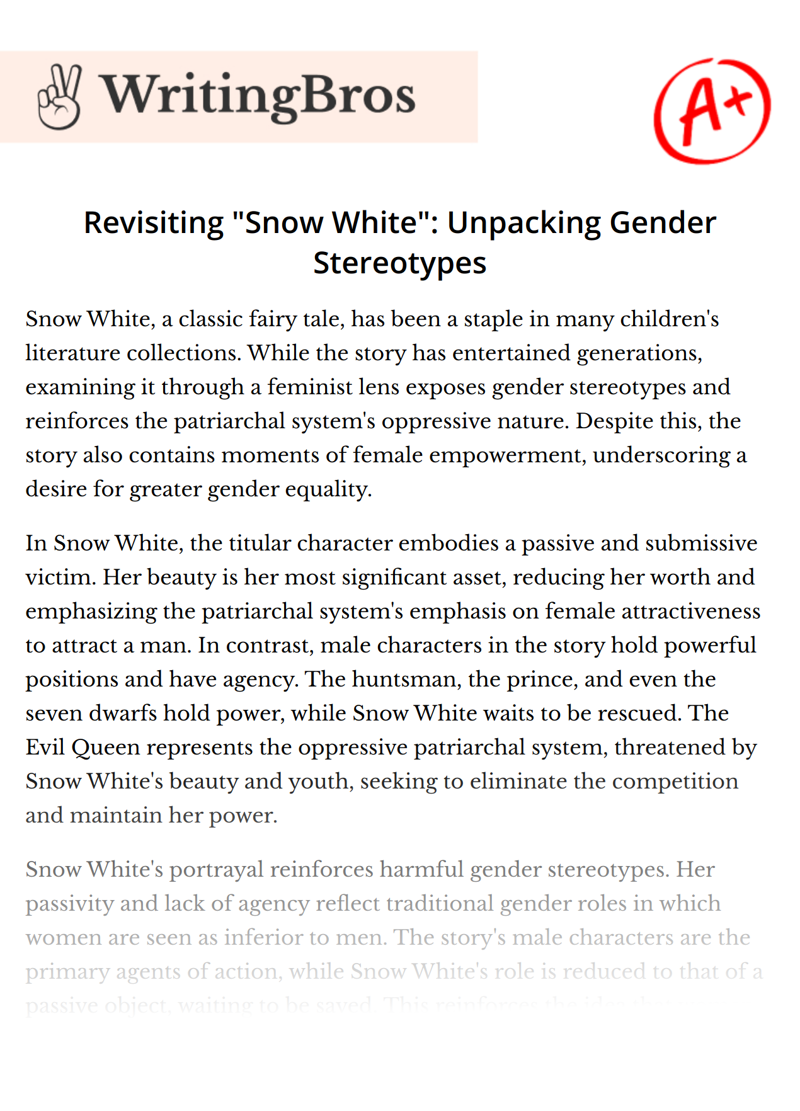Revisiting "Snow White": Unpacking Gender Stereotypes

Snow White, a classic fairy tale, has been a staple in many children's literature collections. While the story has entertained generations, examining it through a feminist lens exposes gender stereotypes and reinforces the patriarchal system's oppressive nature. Despite this, the story also contains moments of female empowerment, underscoring a desire for greater gender equality.
In Snow White, the titular character embodies a passive and submissive victim. Her beauty is her most significant asset, reducing her worth and emphasizing the patriarchal system's emphasis on female attractiveness to attract a man. In contrast, male characters in the story hold powerful positions and have agency. The huntsman, the prince, and even the seven dwarfs hold power, while Snow White waits to be rescued. The Evil Queen represents the oppressive patriarchal system, threatened by Snow White's beauty and youth, seeking to eliminate the competition and maintain her power.
Snow White's portrayal reinforces harmful gender stereotypes. Her passivity and lack of agency reflect traditional gender roles in which women are seen as inferior to men. The story's male characters are the primary agents of action, while Snow White's role is reduced to that of a passive object, waiting to be saved. This reinforces the idea that women are incapable of taking care of themselves and need male protection.
However, there are moments in the story that suggest female empowerment. Snow White's connection to nature and ability to communicate with animals demonstrates her strength. Her ability to take on traditional gendered roles, such as cooking and cleaning for the seven dwarfs, challenges societal expectations of women's roles. It is also worth noting that it is a group of female animals who come to Snow White's aid and who ultimately defeat the Evil Queen.
Examining Snow White through a feminist lens highlights the gendered power dynamics present in traditional fairy tales. Male characters hold positions of power, while female characters are reduced to passive objects, waiting for male protection. This reinforces the patriarchal system's oppressive nature, which values women primarily for their physical appearance and reinforces harmful gender stereotypes. However, the story also contains moments of female empowerment, underscoring a desire for greater gender equality.
In conclusion, Snow White's portrayal perpetuates gender stereotypes and reinforces the patriarchal system's oppressive nature. The character's beauty and passivity reduce her worth, while male characters hold positions of power and agency. However, the story also contains moments of female empowerment, challenging societal expectations of women's roles and highlighting a desire for greater gender equality. By examining the story through a feminist lens, we can begin to recognize the harmful gendered power dynamics present in traditional fairy tales and work towards creating more empowering narratives for future generations.
Cite this Essay
To export a reference to this article please select a referencing style below

